NFTs
This Arizona artist is selling NFTs to help save endangered axolotls in Mexico
Meet an artist who’s at the forefront of technology and environmentalism—at least when it comes to a small, rare salamander that lives in Mexico City’s only lake.
You’ve probably heard of the axolotl or seen various representations of it everywhere, from Mexican folk art to Japanese anime and the video game Minecraft. But while these adorable creatures are iconic in art and culture, they are endangered. The lake the axolotls call home is being polluted and their numbers are dwindling.
That’s where Matt Martinez comes in. goes by the name “scum” and is using her artistic work to raise money and awareness about the plight of axolotls.
His art cannot be found on the walls of galleries or homes. It is bought and sold exclusively online as so-called NFTs, or non-fungible tokens. It’s a new virtual art world that he sees as the wave of the future. The Show caught up with him recently to talk more about all of this.
Full conversation
MATT MARTINEZ: An NFT is a subscription to a blockchain. I sell NFTs specifically on the Solana blockchain, but there are many out there. You have Ethereum, AVAX, Bitcoin, Tezos. They all have thriving art markets. But essentially, before NFTs, it was impossible to sell a digital artwork and prove ownership. Now that art has changed, the kind of buzzword is “digital provenance.”
So if I create a digital artwork and I have followers and collectors and they want to buy, own and eventually sell a digital artwork, they can do so because of NFTs. That’s a 10,000 foot view.
But the real exciting part of NFTs in the beginning was that royalties can be included in the smart contract. So if my collector buys a piece of art and sells it for more or less later – it doesn’t matter – a percentage of that sale will automatically go to my wallet, the wallet that created the NFT in the first place.
So a lot of people joked that they could just right-click to save a piece of art because it’s digital. And of course you can, but you can’t own it or sell it. And there is a market for both in the NFT space.
LAUREN GILGER: So interesting. So it’s like a digital version of Christie’s or something like that, like an auction house.
MARTINEZ: Well, Christie’s is auctioning NFTs.
GILGER: And for crazy amounts of money, right?
MARTINEZ: Hmm, hmm.
GILGER: Wild. OK, so there’s an interesting idea there of connecting digital and physical art. Are there physical versions of much of your digital art or none at all?
MARTINEZ: So in my case, no. In the future perhaps. But in my case, no. Everything is created digitally, whether with Photoshop or Procreate, whether on the iPad or on the computer. But there are many artists who create physical works, take high-resolution photos of them, sell the NFT as a kind of proof of authenticity, and then they can send the physical artwork to whoever owns it.
But what’s being worked on now, that no one has figured out yet, is incorporating NFC chips or chips tied specifically to the NFT and then an escrow service. So if someone is selling the physical artwork, the NFT will be transferred along with it and royalties will also apply.
GILGER: It’s fascinating because it raises a whole different layer of questions about ownership and what that means, in a kind of digital landscape. How did you get into this?
MARTINEZ: So I was kind of a closet artist for a long, long time. I worked with branding, graphic design, web design and photography for a long time. In a previous life, I also worked in the restaurant industry here in Arizona.
But a mentor of mine said, “you should look into NFTs.” I think this was late 2021. And he said, “I think we can be early for something for the first time.” I was like, “OK.” And he was also one of my biggest clients. I was a freelance graphic designer. I managed some of their brands, photography, etc.
And about two months after he told me to look into NFTs, I gave up. All. I’ve left all my clients and I’m working full time on Web3, I guess that’s kind of the placeholder name for this space.
GILGER: I saw that. I didn’t know what that meant.
MARTINEZ: I’ve been full-time as an artist for a little over two years.
GILGER: Wow. So this is a whole different realm for you. This is really cool.
MARTINEZ: It’s new.
GILGER: How do you make NFT art? What is your process?
MARTINEZ: So, like I said, I’m a digital artist. Some things may start as an outline. Some things may start as a small painting, a drawing on a napkin, whatever. Conceptually, it all starts in my head. And so I use a program called Procreate most often. And then you export your digital artwork, you do it in a large enough resolution that the quality is good, so that it can be displayed. Ideally, in the future, people will display digital art in their homes.
And then you subscribe to the chain. I use, specifically on Solana, there is a platform called Exchange.Art. They upload your artwork and then write a smart contract that represents your artwork. And then on their platform you can buy, sell and trade art. You can also do things privately – OTC, as they call it, or over-the-counter, off-network. And as an NFT artist, you are doing the marketing. So you go on Twitter, Instagram, or Discord and share your art with collectors.
GILGER: It’s essentially like putting it on a gallery wall, but it’s your personal gallery that’s everywhere.
MARTINEZ: Yes, 100%.
An art exhibition by Matt “Scum” Martinez in Mexico City to save the axolotls.
GILGER: This is fascinating. OK, so let’s talk about some of the projects you’ve been involved with. You’re involved in a very interesting project right now outside of Mexico City, which involves trying to save these adorable, somewhat folkloric creatures called axolotls, which are salamanders. But you’ve seen their images. It was kind of mythologized at this point.
And the idea here is to create sculptures that help raise money to save the environment, essentially. Tell us about it.
MARTINEZ: Dude, can you help me now. So at the beginning, when I started my latest collection – it’s called Slimes – I pledged to donate 10% of every sale throughout the entire series. There will be 50, so it’s not complete yet. But so far we’ve raised about $40,000. The original goal was just to try and donate some money.
And then I took a trip to Mexico City last year to meet with some partners who were working on this project. When we went there, we discovered that it is a very, very delicate ecosystem.
So they’re iconic, right? Axolotls. They are in Japan. They are in the United States. They are kept as pets, but most people don’t know that they are endemic to this lake in Mexico City, which is what remains of the ancient city of Tenochtitlan.
They still use ancient agricultural techniques called chinampas. Chinampas are essentially floating gardens. It’s really, really cool.
Right now the lake is very polluted because of runoff from the city. So the lake gets polluted once a year whenever it rains, unfortunately. Additionally, sometime in the 1960s, they introduced tilapia and carp into the lake. They are predatory fish. They have been eating the axolotl population.
So you take all of these factors into consideration, and I think in the last five months, basically everyone who works at the lake, trying to preserve it, the axolotl population has accepted the fact that they no longer exist in the wild. So now we’re working with a lot of people who are trying to create an environment within the lake where they can survive.
GILGER: So tell me a little about the reason for this project. There’s a history of artists using their art for the common good or for certain causes and things like that. But why this one for you and why this way?
MARTINEZ: So I grew up in the United States. Dad is Mexican, Mom is Canadian. And this is just a big part of my personal tradition. But I felt like I was always a little too Mexican for my white friends, too white for my Mexican friends. And I’ve never had a good outlet to explore these topics.
So, through art, I decided to delve into what being Mexican meant to me. So my art, for the most part, is the characters themselves who are luchadores, exploring Chicano and ancient Mexican aesthetics and mythology and trying to combine that thing that makes me feel like I’m learning, like I’m growing up a little bit.
Likewise, I used a lot of images of axolotls after I discovered they were endemic to this little place in Mexico City. So I wanted to do something to try and help the axolotls. And throughout the process, I became more and more in love with the animal and the place itself. And now it feels like I don’t know what else I would be doing with my time other than that. That’s quite nice.
GILGER: What’s next? This is just the beginning, it seems.
MARTINEZ: It’s just the beginning. So we recently had our first exhibition: 11 sculptures, 11 artists from Mexico City, Uruguay, Colombia and the United States and Canada. We are working to take a set of sculptures to COP16 (United Nations Conference on Biodiversity) in Colombia. We are working to get a large chunk of it presented to the UN General Assembly. We have contacts. We hope this all works out.
Things have been working out pretty well so far, so there’s no reason to believe they won’t. The sculptures are being placed specifically in areas or chinampas where people work at the lake, whether to reintroduce native plants, remove invasive species, or try to specifically help the axolotl. Therefore, we are working with Embarcadero Cuemanco to offer tours specific to the location of the sculptures so that people can learn about what is happening at the lake and also support the people who are actively working at the lake.
KJZZ’s The Show transcripts are created on time. This text may not be in its final form. The official record of KJZZ programming is the audio record.
NFTs
RTFKT Announces Project Animus Reveal, Launches Egg Unboxing Event Amid Mixed Reactions | NFT CULTURE | NFT News | Web3 Culture
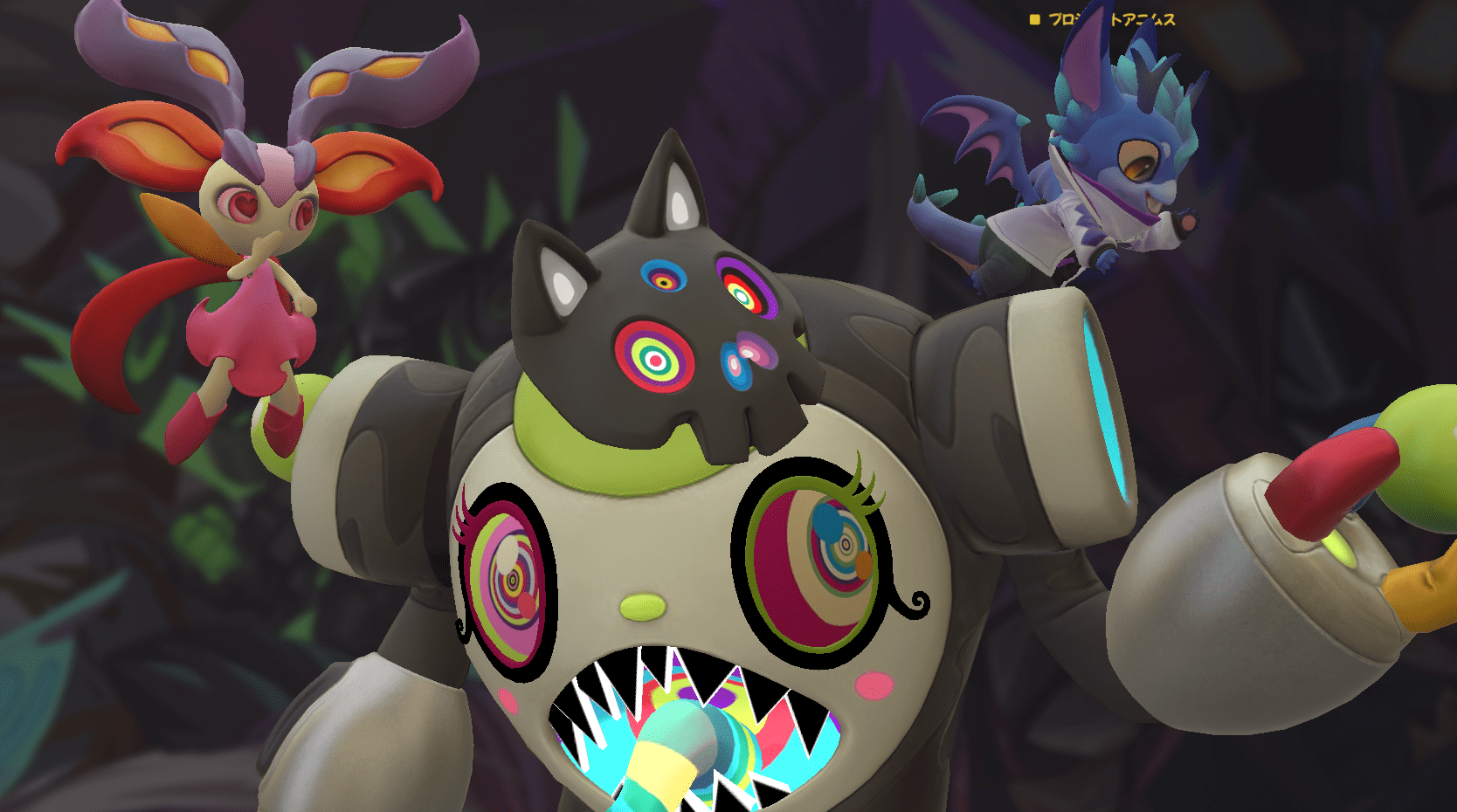
RTFKT, the innovative creator-led company renowned for its cutting-edge sneakers and metaverse collectibles, has officially unveiled its highly anticipated collection, Project Animus. This project marks a significant milestone in RTFKT’s journey, introducing a new dimension to its digital universe after a long period of development. However, the initial market response has been disappointing, with the revealed Animi trading at a floor price of 0.05 ETH, significantly lower than the eggs’ floor price of 0.09 ETH.
The Genesis of the Project Animus
Initially introduced in October 2022, Project Animus introduces a unique ecosystem of digital creatures called Animi. These Animi are designed to enhance Clone X’s avatars, offering an immersive and engaging experience for the community. The recent reveal showcased a diverse range of Animi species, each with distinct design traits and elemental attributes, breaking away from traditional trait-based rarity systems.
A New Digital Frontier: The History and Evolution of Project Animus
The Animus Project is RTFKT’s latest intellectual property, promising to revolutionize the NFT space with its unique digital creatures. The journey kicked off on October 8, 2022, with an interactive teaser event called “The Eggsperience.” This livestream event allowed attendees to explore a virtual Animus Research Facility, generating intrigue and excitement among the community.
Renowned artist Takashi Murakami played a significant role in the project, revealing the first Murakami-themed Animus creature, Saisei, on April 30, 2023. This collaboration added a layer of artistic prestige to the project, further elevating its status within the NFT community.
Animus Egg Incubation: A Journey from Egg to Animi
Clone X NFT holders had the opportunity to claim an Animus Egg until March 1, 2024. This was followed by the Animus Egg Hatching event, which ran from May 7 to June 4, 2024. During this period, holders of several RTFKT NFTs, including Clone X, Space Pod, Loot Pod, Exo Pod, and Lux Pod, were able to use a points-based system to increase their chances of hatching rarer Animi. The limited supply of Project Animus Eggs is capped at 20,000, with no public sale planned.
Mixed market reception
Despite the excitement and innovative features, the market reaction to the reveal of Project Animus has been lukewarm. Animi is currently trading at a floor price of 0.05 ETH, significantly lower than the eggs’ floor price of 0.09 ETH. This discrepancy has led to disappointment among some collectors who had high expectations for the project.
What Awaits Us: The Future of Project Animus
Following the reveal, RTFKT plans to release a collection of exclusive Animus Artist Edition characters. Holders of Clone X Artist Edition NFTs are guaranteed to get one of these special editions. The distribution will include 88 Special Edition Animus, with 8 Mythic (Dragon Sakura), 40 Shiny, and 40 Ghost Animus. The odds of receiving a Special Edition Animus are the same for all Eggs hatched, regardless of the points accumulated.
The remaining Animus characters will be distributed among unhatched Eggs, encompassing Special Edition Animus, as well as Cosmic Animus and Murakami Element from Generation 1, Generation 2, and Generation 3.
Conclusion
RTFKT’s Project Animus represents a bold step forward in the NFT space, combining cutting-edge technology with artistic collaboration to create an immersive and innovative digital ecosystem. However, the initial market reception highlights the challenges of living up to high expectations in the ever-evolving NFT landscape. As the project continues to evolve, it promises to deliver unique experiences and opportunities for its community, solidifying RTFKT’s position as a leader in the metaverse and digital collectibles arena.
Summary: RTFKT has unveiled Project Animus, introducing a unique ecosystem of digital creatures called Animi designed to enhance Clone X avatars. Despite the excitement, market response has been mixed, with Animi trading at a lower floor price than eggs. The project kicked off with an interactive event in October 2022, featuring collaborations with artist Takashi Murakami. Following the reveal, RTFKT will release special edition Animus characters. The total supply of Animus Eggs is limited to 20,000, with no public sale planned.
NFTs
The Olympics have reportedly ditched Mario and Sonic games in favor of mobile and NFTs
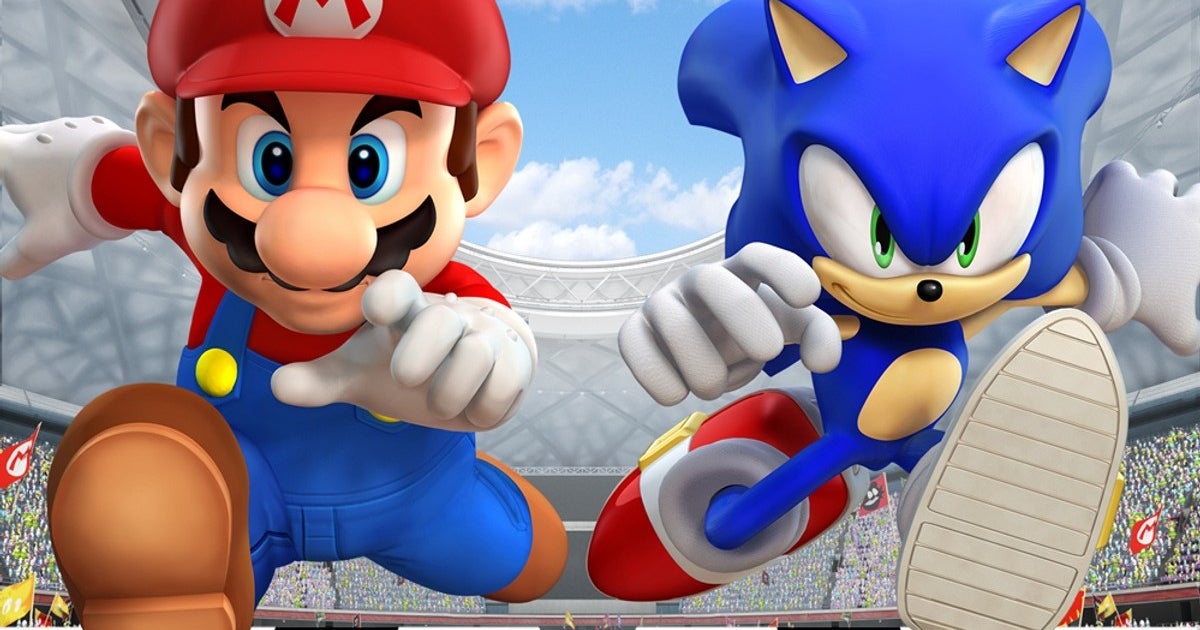
The long and historic partnership between Nintendo and Sega to create video games for the Olympics reportedly ended in 2020 as event organizers sought opportunities elsewhere.
Lee Cocker, who served as executive producer on several Mario & Sonic Olympics titles, said Eurogamer the International Olympic Committee let the licensing agreement lapse because it “wanted to look at other partners, NFTs and esports.”
“Basically, the IOC wanted to bring [it] “Turn inward and look for other partners so you can get more money,” Cocker added.
The 2024 Summer Olympics kicked off in Paris last week, but there were no Mario & Sonic games available in time for the event to begin – the first time this has happened since the original release in 2007 to coincide with the 2008 Beijing Summer Olympics.
Over the past two decades, there have been four Mario and Sonic adaptations for the Summer Olympics, as well as two for the Winter Olympics.
This year, instead of a Nintendo/Sega title, the IOC released Olympics Go! Paris 2024, a free-to-play mobile and PC title developed by nWay, which has worked on several Power Rangers games.
Olympics Go! allows players to compete in 12 sports and unlock NFTs from the Paris 2024 digital pin collection.
The original Mario & Sonic at the Olympic Games was announced in March 2007 and marked the first time the two mascots – once archrivals in the console wars of the 1990s – appeared together in a game.
NFTs
DraftKings abruptly shuts down NFT operation, leaving collectors panicking over vast holdings of digital tokens
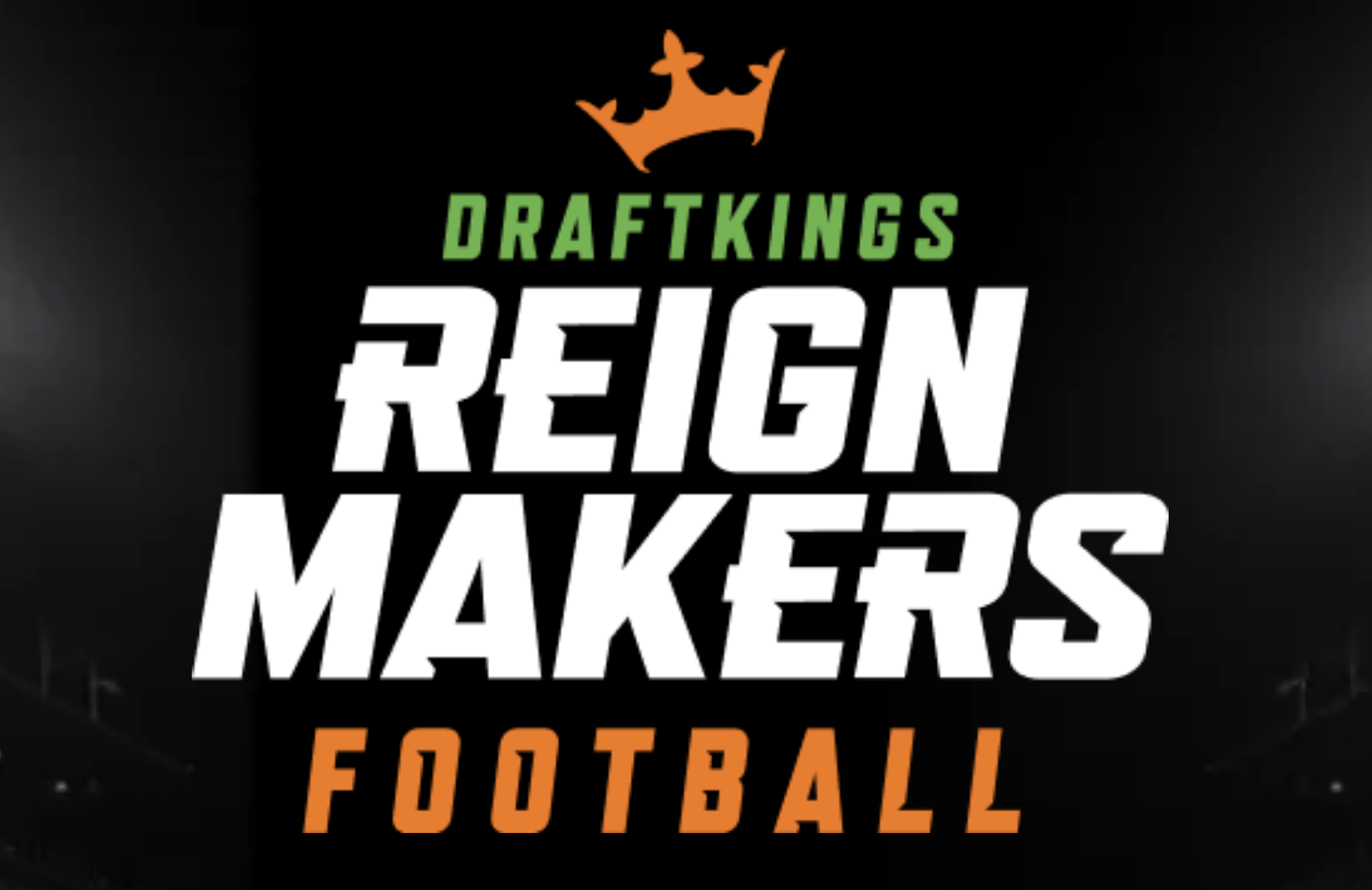
DraftKings, the daily fantasy sports and sports betting company, abruptly shut down a program called Reignmakers on Tuesday, posting a notice on its website and associated app and sending a mass email to some subset of its user base. Reignmakers, which the company launched in 2021, offered pay-to-play competitions in NFL football, PGA Tour golf and UFC mixed martial arts. The decision to eliminate the entire program, DraftKings says, was not made lightly but was forced “due to recent legal developments.”
DraftKings has yet to specify what “recent legal developments” are troubling its now-dead Reignmakers product. The company was sued in U.S. District Court in 2023 by a Reignmakers player named Justin Dufoe, who accuses the company of dealing in unregistered securities, taking advantage of relatively unsophisticated “retail investors,” and failing to market and support Reignmakers to the degree necessary to return to its users the financial benefits expected. DraftKings filed a motion in September to dismiss Dufoe’s complaint, but that motion was denied on July 2. A scheduling conference was held by the parties on July 29; Reignmakers was permanently shut down on July 30. A DraftKings spokesperson reached by Defector on Wednesday declined to confirm whether Dufoe’s complaint is the “recent legal development” that forced the company’s hand.
Users of the Reignmakers NFL product, who in recent days began murmuring on social channels about a notable lack of DraftKings activity so close to the start of the NFL preseason schedule, were caught off guard and, in some cases, devastated by the news. Members of the DraftKings Discord server, where all Reignmakers-related channels were abruptly shut down and locked following the announcement, flooded a general channel in various states of panic, sharing news, theorizing, lamenting, and, in some cases, openly worrying about whether it would be possible to recoup any decent fraction of the genuinely impressive sums of money they had invested in this DraftKings product.
Reignmakers is nominally a daily fantasy contest—users build lineups of players and then pit those lineups against other users’ lineups for cash prizes—but it’s actually a distributor of nonfungible digital tokens (NFTs), originated and sold by DraftKings, and then frequently resold on a dedicated secondary marketplace also hosted by DraftKings. At the lineup-building level, Reignmakers functions like a card-collecting game, with artificial scarcity driving the prices of the most coveted cards to insane, eye-popping heights. Reignmakers NFTs are tiered and offered in timed drops designed to heighten the sense of scarcity. A user can enter a lower-tier contest using a collection of NFTs that may have cost a few hundred dollars in total (or that were earned by purchasing random packs of NFTs that offer generally low odds of scoring top assets) and throw their lot in with hundreds of casual users competing for relatively unimpressive rewards. Random packs at the lowest tier would have prices as low as a few dollars; mid-tier cards—Star and Elite tiers, I’d guess—could cost a player upwards of $1,000.
But players interested in hunting down the biggest payouts, not just from games but from leaderboard prizes and other assorted prizes, would need to enter higher-tier games, and to enter the higher-tier games, a user’s collection needed to include higher-tier NFTs. DraftKings ensured that these cards were extremely scarce and could only be purchased directly on the marketplace at prices that any reasonable person would consider utterly insane.
For example, the highest-tier Reignmaker contests (called the Reignmakers tier, of course) have in the past been limited to listings with at least two of the highest-tier, rarest NFTs (also the Reignmaker tier) plus three NFTs from the second-highest tier (Legendary). NFTs at these tiers are expensive. Not just expensive in the way that, like, a steak dinner is expensive, but expensive in the way that buying even one of them should trigger a mandatory visit to a gambling addiction counselor, if not sirens and a straitjacket. Back in 2022a Reignmaker-level Ja’Marr Chase NFT from something called the Field Pass Promo Set could be purchased directly from the DraftKings Reignmaker Marketplace for a whopping $32,100.
Reignmakers users purchased NFTs at various levels with the expectation that owning them would convey better odds of winning contests hosted on DraftKings. This was the gamification element of Reignmakers, which emerged several months after DraftKings began trading and minting its NFTs. But as with all NFTs, a very large part of the real appeal for its buyers was the expectation, however insane, that these worthless, virtually worthless, infinitely duplicable digital images would increase in value over time. Now that both the Reignmakers game and the Reignmakers marketplace have been shut down, Reignmakers NFT holders are worried that their investments may have suddenly lost all monetary value. One Discord user described Tuesday as “a bad day to wake up and realize you have $2,000 worth of unopened NFL Rookie Packs”; Another user asked the group if they should expect “a refund” on the $10,000 they’ve already spent on Reignmakers NFTs this year. A pessimistic Reddit user posted tuesday that they would sue DraftKings if they were forced to take a total loss on a Reignmakers NFT collection worth approximately $100,000.
The game (scam?) was built to make numbers like these not only possible, but somewhat easily achievable. A user who intended to compete from a position of strength in multiple overlapping high-profile contests at the same time, and who had been in the blockchain madhouse for a period of years, could easily have spent six figures on Reignmakers NFTs. DraftKings used non-gaming incentives to entice players to spend more and more money, much like casinos give away free suites to players who over-bet on blackjack. Another Reddit user lamented the loss of the additional prizes and ranking bonuses he had hoped to earn in the upcoming NFL season by having a portfolio of NFTs that had reached the highest levels of value and prestige. “I was already loaded up on 2024 creation tokens and rookie debut cards,” said this Reignmakers userwho claimed his portfolio was finally “close to the top 250 overall.”
Dufoe’s complaint says the NFTs minted by DraftKings for Reignmakers qualify as securities, function like securities, and should be regulated as securities. In its motion to dismiss, DraftKings attempted to position its NFTs as game pieces — eye-wateringly expensive, yes, but essentially the same thing as Magic: The Gathering cards or Monopoly hotels. The court, in resolving these arguments, applied what’s known as “the Howey test,” referencing a case from 1946 in which the U.S. Supreme Court established a standard for determining whether a specific instrument qualifies as an investment contract. Judge Dennis J. Casper, in ruling against DraftKings’ motion, concluded that Dufoe could plausibly argue that Reignmakers’ NFT transactions represent “the pooling of assets from multiple investors in such a manner that all share in the profits and risks of the enterprise,” arguing that DraftKings’ absolute control over the game and marketplace effectively binds the financial interests of the company and the buyers, the latter of whom depend on the viability of both for their NFTs to retain any value.
Reignmakers users are different from Monopoly players in at least one crucial way: A person who buys a Monopoly board has no expectation from Hasbro that those little red and green pieces will appreciate in value. It’s a game! No matter what any hysterically conflicted party may say to the contrary, that’s not what NFT collecting is. DraftKings had been selling Reignmakers NFTs for months before they were gamified, and Dufoe, in his complaint, cites public comments made by DraftKings spokespeople that seem to explicitly position Reignmakers NFTs as assets with independent monetary value beyond their utility in Reignmakers contests. Judge Casper, in his ruling on the motion to dismiss, cites a Twitter account associated with a podcast run by DraftKings CEO Matthew Kalish, who in a tweet described NFTs as “the opportunity to invest in startups, artists, operations, and entrepreneurs all at once.” This is probably the kind of thing that NFT peddlers should stop saying. This advice assumes, of course, that NFTs will continue to exist as instruments on the other side of this and other lawsuits.
DraftKings has posted a worryingly sparse FAQ at the bottom of the your ad Tuesday, anticipating but largely failing to address questions from players who see this as yet another in a long line of brutal blockchain rug pulls. In a hilarious reversal of existing Reignmakers policy, Reignmakers users are now allowed by DraftKings to withdraw their Reignmakers NFTs from their DraftKings portfolios and into their personal NFT wallets, where those NFTs will have precisely zero value, to anyone, for the rest of all time. There’s also vague language about Reignmakers users having the option to “relinquish” their NFTs back to DraftKings in exchange for “cash payments,” subject to “certain conditions” and according to an as-yet-unspecified formula that will take into account, among other things, the “size and quality” of a player’s collection.
Reignmakers users are not optimistic. Those who claim to have been victims of other blockchain market crashes are warning their peers on Discord and Reddit to expect payouts that amount to pennies on the dollar; in the absence of any clarifying information, users are unsure whether cashing out their NFTs from Reignmakers to their personal NFT wallets, for reasons that completely pass any and all understanding, would effectively preclude the possibility of delivering these silly digital tokens back to DraftKings. It remains to be seen what exactly DraftKings has in mind with the “certain conditions” attached to the delivery process. There is much that has yet to be resolved. A DraftKings spokesperson contacted by Defector indicated that more time would be needed to answer a list of specific questions and issued a statement noting that it is “in DraftKings’ DNA to innovate and disrupt to provide the best possible gaming experiences for our customers.” The original complaint is embedded below.
Do you know anything about the demise of Reignmakers, either from the consumer side or from the DraftKings side? We’d love to hear from you. Get it in touch!
Recommended
NFTs
There Will Be No More ‘Mario & Sonic’ Olympics Because of NFTs
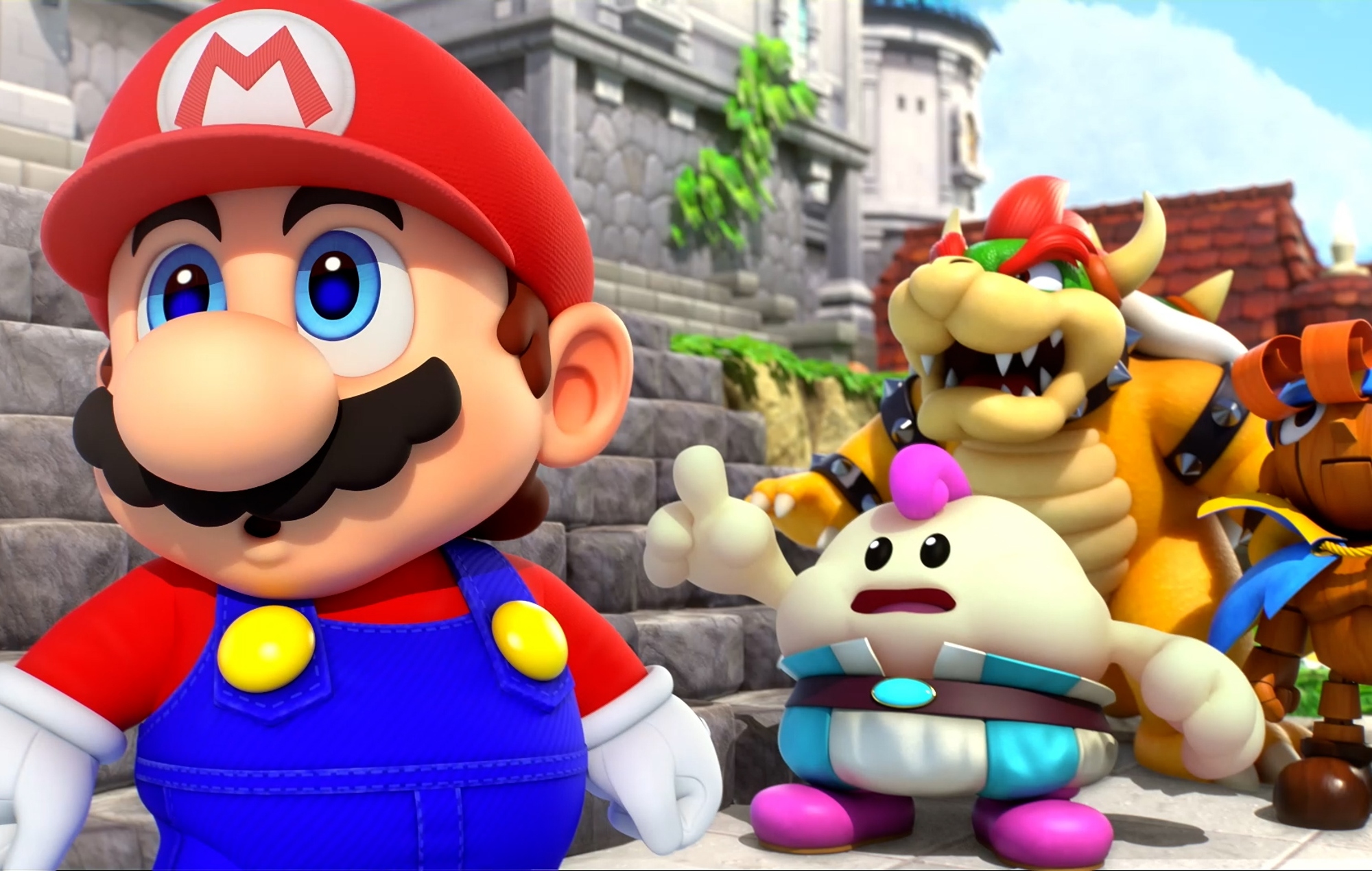
Nintendo and SEGA have been teaming up with the Olympics for several years now in the popular Mario & sonic in the Olympic Games series, but a new report claims the International Olympic Committee has abandoned the series in favor of new deals in eSports and NFTs.
According to Eurogamer“A veteran behind the series,” Lee Cocker, told the outlet that the IOC chose not to renew its license with SEGA and Nintendo, letting it expire in 2020. “They wanted to look at other partners and NFTs and eSports,” Cocker told Eurogamer. “Basically, the IOC wanted to bring [it] turn inward and look for other partners so they could get more money.”
Mario & Sonic at the Olympic Games is a series that has been running since 2008, with six main games covering the regular and Winter Olympics. In the games, players could control various characters from the Mario and Sonic franchises and compete in Olympic sporting events.
It’s no secret that NFTs are a big part of this year’s Paris 2024 Olympics. Olympics Go! Paris 2024 is a mobile and mobile-connected game your site states that players can “join the excitement of the Paris 2024 Olympic Games with nWay’s officially licensed, commemorative NFT Digital Pins collection honoring Paris 2024!”
As for eSports, Saudi Arabia will host the ESports Olympic Games in 2025. This is part of a partnership with the Saudi National Olympic Committee (NOC) that is expected to last for the next 12 years and is expected to feature regular events.
IOC President Thomas Bach said: “By partnering with the Saudi NOC, we also ensure that Olympic values are respected, in particular with regard to the game titles on the programme, the promotion of gender equality and the engagement with young audiences who are embracing esports.”
In other news, Someone claimed they’re suing Bandai Namco because Elden Ring is too difficult.
-
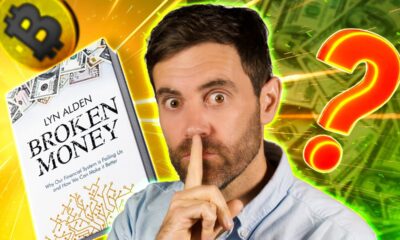
 Videos7 months ago
Videos7 months agoMoney is broke!! The truth about our financial system!
-

 News7 months ago
News7 months agoMore Crypto AI Alliances Emerge Following $7.5 Billion Token Merger — TradingView News
-

 News6 months ago
News6 months agoOver 1 million new tokens launched since April
-
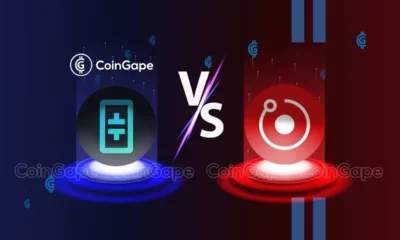
 Altcoins6 months ago
Altcoins6 months agoRender vs. Theta; Which DePIN Altcoin to buy in May
-

 NFTs7 months ago
NFTs7 months agoSurprisingly, Bored Apes is now laying off employees as the NFT market disintegrates
-

 Videos6 months ago
Videos6 months agoFantom: Potential FTM Price and BIG Updates – The Latest!!
-
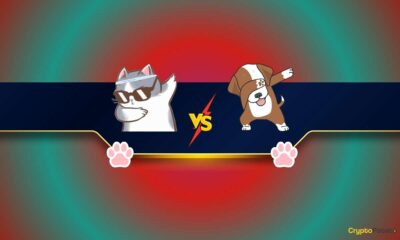
 Memecoins6 months ago
Memecoins6 months agoChatGPT Analytics That Will Work Better in 2024
-
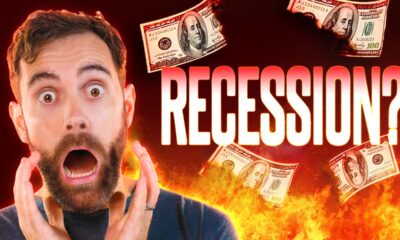
 Videos6 months ago
Videos6 months agoRecession soon?? What this means for you and your wallet!!
-
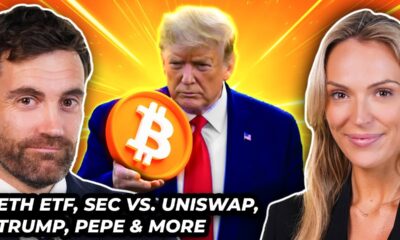
 Videos6 months ago
Videos6 months agoCrypto News: ETH ETFs, Pro-Crypto Politics, UNI, DOGE & MORE!
-
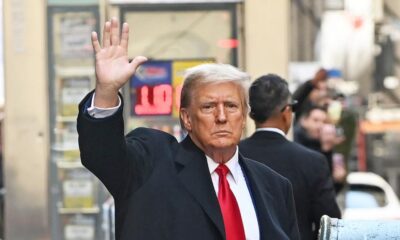
 NFTs7 months ago
NFTs7 months agoTrump endorses Bible line – after selling shoes, NFTs and more
-
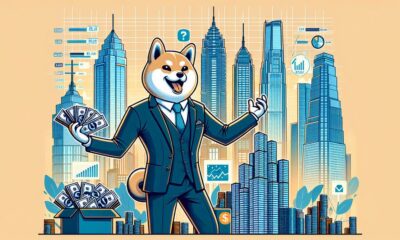
 Altcoins6 months ago
Altcoins6 months agoAltcoin Investments to create millionaires in 2024
-
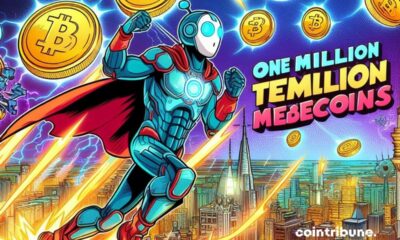
 Memecoins6 months ago
Memecoins6 months agoWhen memecoins reign supreme in the ecosystem!





